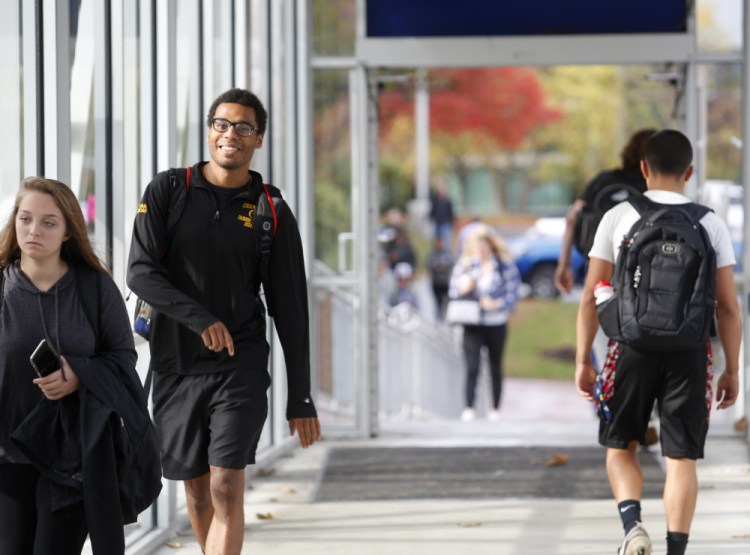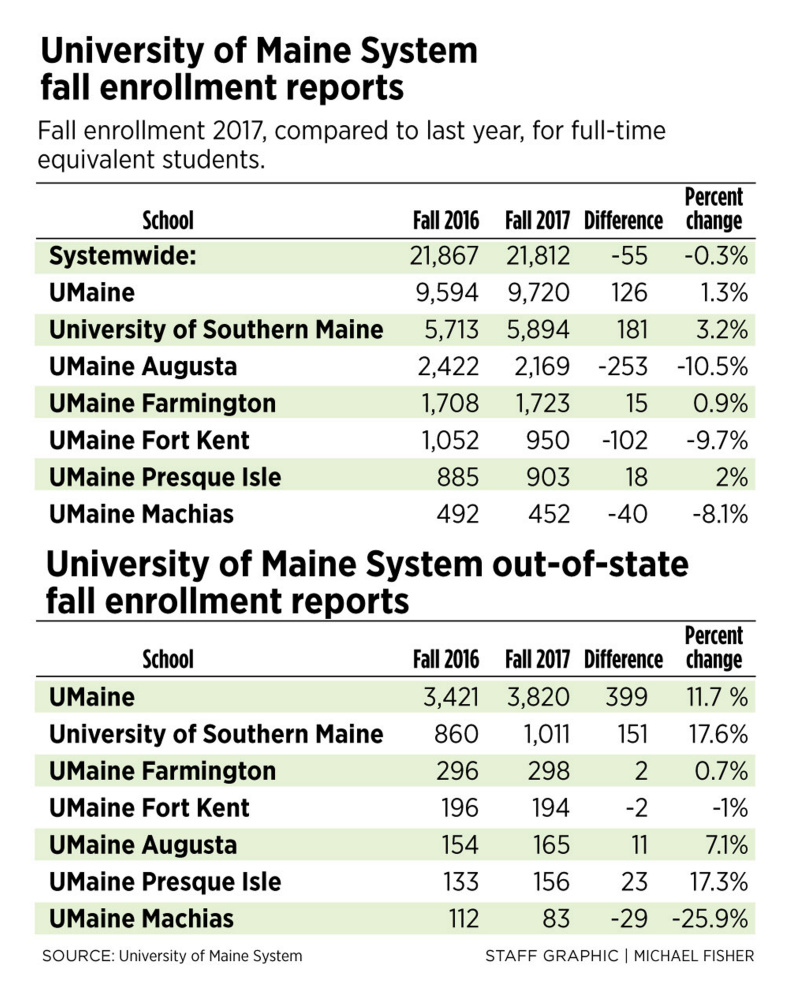The number of out-of-state students enrolled in the University of Maine System is at an all-time high this fall, even though overall enrollment in the state’s public university system dipped slightly.
There are now 5,727 out-of state-students enrolled in the system – an 11 percent increase over last year – out of a total headcount of 28,997 students.
The University of Southern Maine alone saw an increase of 18 percent in the number of out-of-state students this fall.
Out-of-state students pay higher tuition, so the rise is positive news for the system’s financial bottom line. At the flagship campus in Orono, which more than half the out-of-state students attend, annual tuition is $27,960 for out-of-state students, compared to $8,580 for in-state students.
Systemwide, the number of out-of-state students is up from 5,172 students in the fall of 2016. Among the larger campuses, USM saw an 18 percent increase in out-of-state students, while the University of Maine posted a 12 percent increase. The smaller campuses had a range of out-of-state enrollment, with the University of Maine at Presque Isle seeing an increase of 17 percent – or 23 students – while the Machias campus saw a 26 percent drop – or 29 fewer students.
In-state student enrollment is down 3.5 percent systemwide, a longtime problem for the system. It traditionally draws the vast majority of its student body from Maine, which has fewer and fewer high school graduates because of demographics.
In-state students make up 76 percent of the total student body. The only campuses with an increase in in-state students over last fall were USM, at 1.1 percent, and the University of Maine at Farmington, at 0.7 percent.
All the campuses have been pushing to increase their out-of-state enrollment to increase tuition revenue. One of the biggest efforts was the “flagship match” tuition program at Orono, which offers students from select states, including Connecticut and California, a tuition rate equal to what they would pay at their home state’s flagship public campus.
Citing a strong enrollment report, USM President Glenn Cummings noted an increase in both in-state and out-of-state students at the school, which met its fall revenue goals.
“It’s good news when students and their families have faith in us and our value,” Cummings said. “It means we’re attracting students and we’re keeping students who will thrive. And that’s really our job, to make them successful.”
Enrollment figures are closely watched because the system has been struggling financially for years, and remains focused on cutting costs and increasing revenue. For years, enrollment has been declining, state funding was flat and tuition was frozen. Hundreds of positions have been eliminated and whole academic departments cut, and there is an ongoing overhaul of academic and back-office departments to stabilize system finances. System officials project a budget surplus in 2022, the first since they began multi-year projections in 2009.
Although three campuses had enrollment declines this fall, none of the system campuses plan any layoffs due to a downturn in expected tuition revenue, in part because of system belt-tightening and back-office consolidations aimed at saving money, according to system spokesman Dan Demeritt.
“The efficiencies and budgeting reforms we have achieved under the One University Initiative have improved our ability to plan for and respond to the annual ebbs and flows of enrollment,” Demeritt said. “Savings achieved from vacant positions and expense reductions are the focus for offsetting enrollment-based revenue shortfalls at the campus level and there are no current plans to eliminate programs or positions tied to changes in credit hour production.”
Financially, the number of credit hours is one of the most closely watched figures since they are tied directly to tuition revenue.
Overall, credit hours were down 0.4 percent this fall, to 315,204 hours systemwide, compared to 316,465 last fall. Of all the campuses, USM saw the largest increase in credit hours – 3.1 percent – with UMPI up 2 percent and Orono up 1.3 percent.
A more detailed enrollment report will be reviewed by the system’s board of trustees at their November meeting.
Noel K. Gallagher can be contacted at 791-6387 or at:
Twitter: noelinmaine
Send questions/comments to the editors.





Comments are no longer available on this story